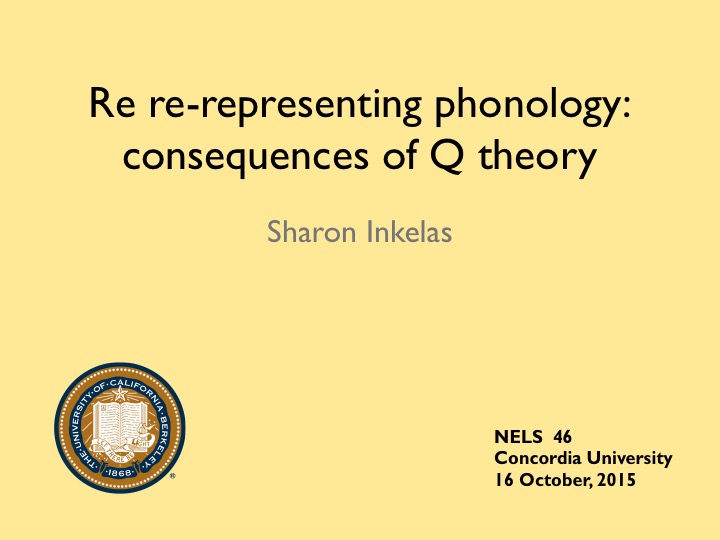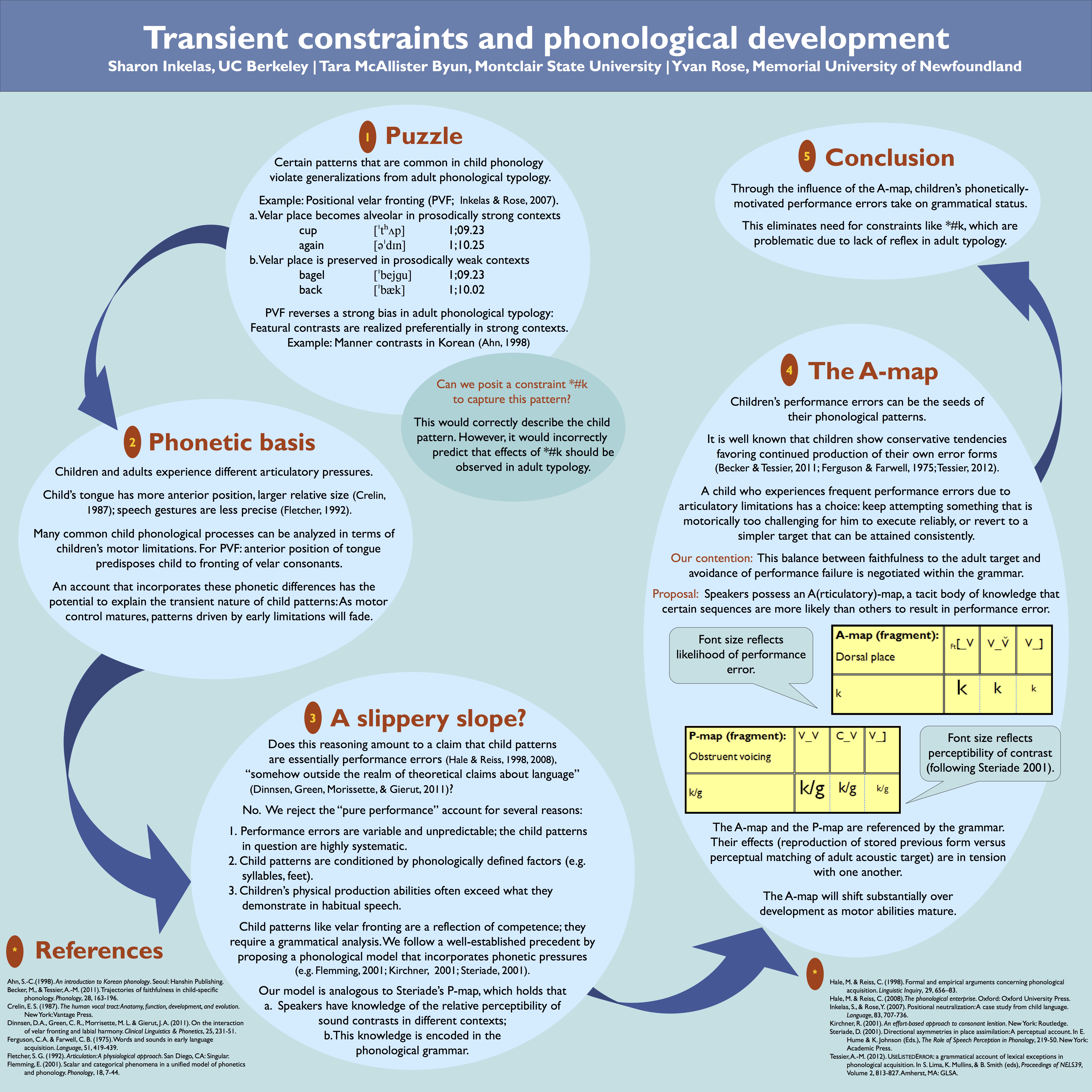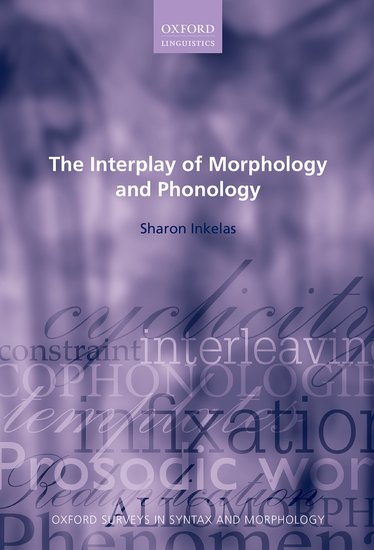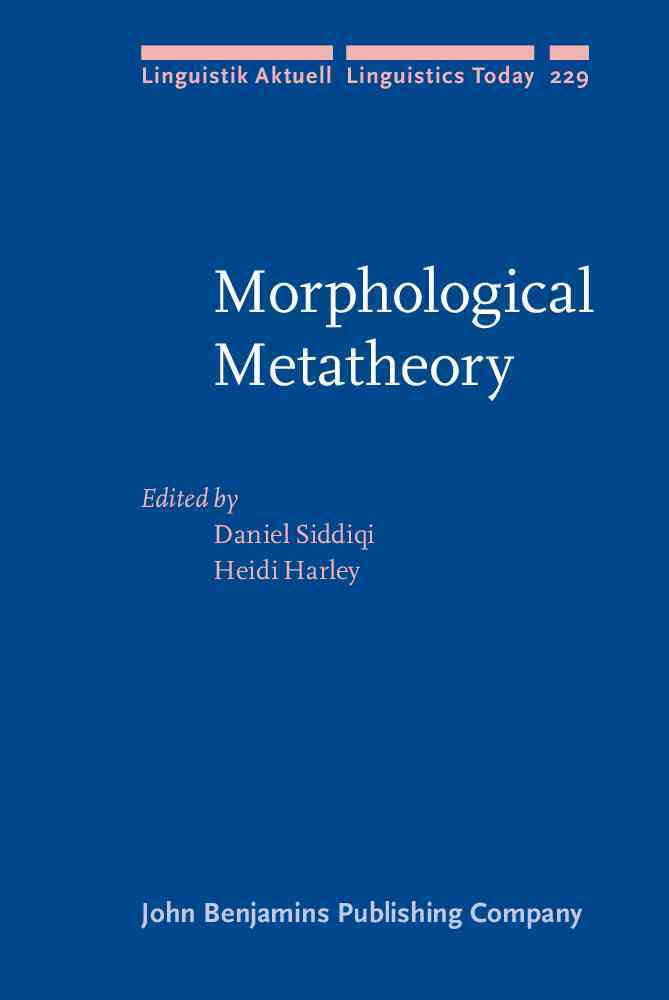Research
Q Theory. With Stephanie Shih (USC) and current UC Berkeley students Karee Garvin, Myriam Lapierre, and Martha Schwarz, I have been developing Q Theory, a new internal representation for segments which decomposes segments into a sequence of three subsegments. A 2019 article on Q Theory in 2019 article in Linguistic Inquiry develops the approach formally and embeds it into Agreement by Correspondence Theory, with tone as a case study (Lingbuzz prepublication version available here). An outgrowth of that work has been the application of weighted correspondence constraints in a MaxEnt Harmonic Grammar analyis of tone patterns in Mende (see e.g., papers by Inkelas and Shih presented at the Chicago Linguistics Society, the Annual Meeting on Phonology and the Annual Conference on African Linguistics). Q Theory is designed around the behavior of contour segments in assimilation and dissimilation. For a complete list of Q Theory publications, including recent extensions of Q Theory to segmental strength scales, please see the Q Theory project page.


Child Phonology. In recent years I have developed a research commitment in child phonology, publishing case studies of interesting patterns in individual children in 2004 and 2007. Recently I have been collaborating with Tara McAllister Byun (NYU) and Yvan Rose (University of Newfoundland) on the A-map model, an exemplar-based Optimality-Theoretic model of phonological learning that builds motoric considerations directly into grammar. A major paper outlining the A-map model, "Articulatory reliability in child-specific phonology", recently appeared in Language. Our work on the A-map model has also been presented at mfm (2012), at ICPC (2012), at NELS (2012), at the Sound Change Actuation workshop (2013), at the LSA Institute Workshop on the Variation in the Acquisition of Sound Systems (2013), at AMP (2013), and at LabPhon 15 (2016). Like my research in morphophonology and morphology, my interest in child phonology lies in relating the apparently idiosyncratic patterns of individuals to the broader trends that can be observed across larger systems.
Phonology-Morphology interface. Since my 1989 Stanford University dissertation, my research has focused on the phonology-morphology interface, looking at the implications of language-specific morphophonological generalizations for cross-linguistic generalizations and the models that capture them. I have published on cyclicity, cophonologies, and realizational morphology. In 2005, Cheryl Zoll and I published Reduplication: Doubling in Morphology with Cambridge University Press. My 2014 book, The Interplay of Morphology and Phonology, published by Oxford University Press, provides an overview of this very rich area of inquiry.


Morphology. Beginning with my study of Nimboran affix ordering in 1993, I have been interested in how seemingly arbitrary conditions on affix ordering interact with - and shed light on - general cross-linguistic principles of morphological combinatorics. With Gabriela Caballero (UC San Diego) I am developing Optimal Construction Morphology, in which blocking and multiple exponence effects emerge from the lexicon in a bottom-up, production-oriented, optimizing model of word formation. Our first paper on OCM appeared in Morphology in 2013. I have also recently carried out exploratory work on affix informativity and affix order with Jem Orgun, presented as a poster in 2015 at the LSA; this work is reported and discussed in the context of Optimal Construction Morphology in a recent paper in a 2016 volume called Morphological Metatheory (Siddiqi and Harley, eds.).